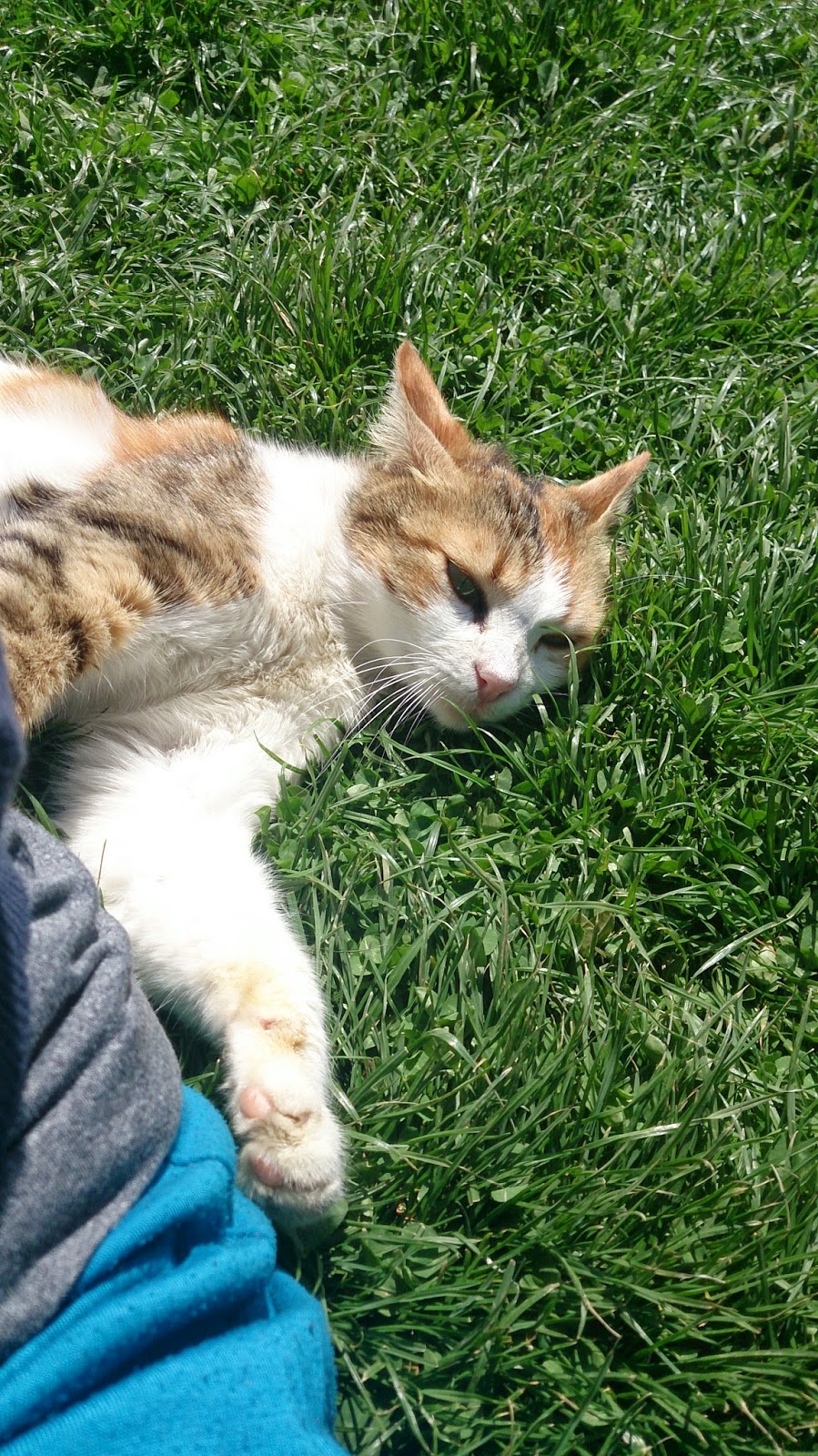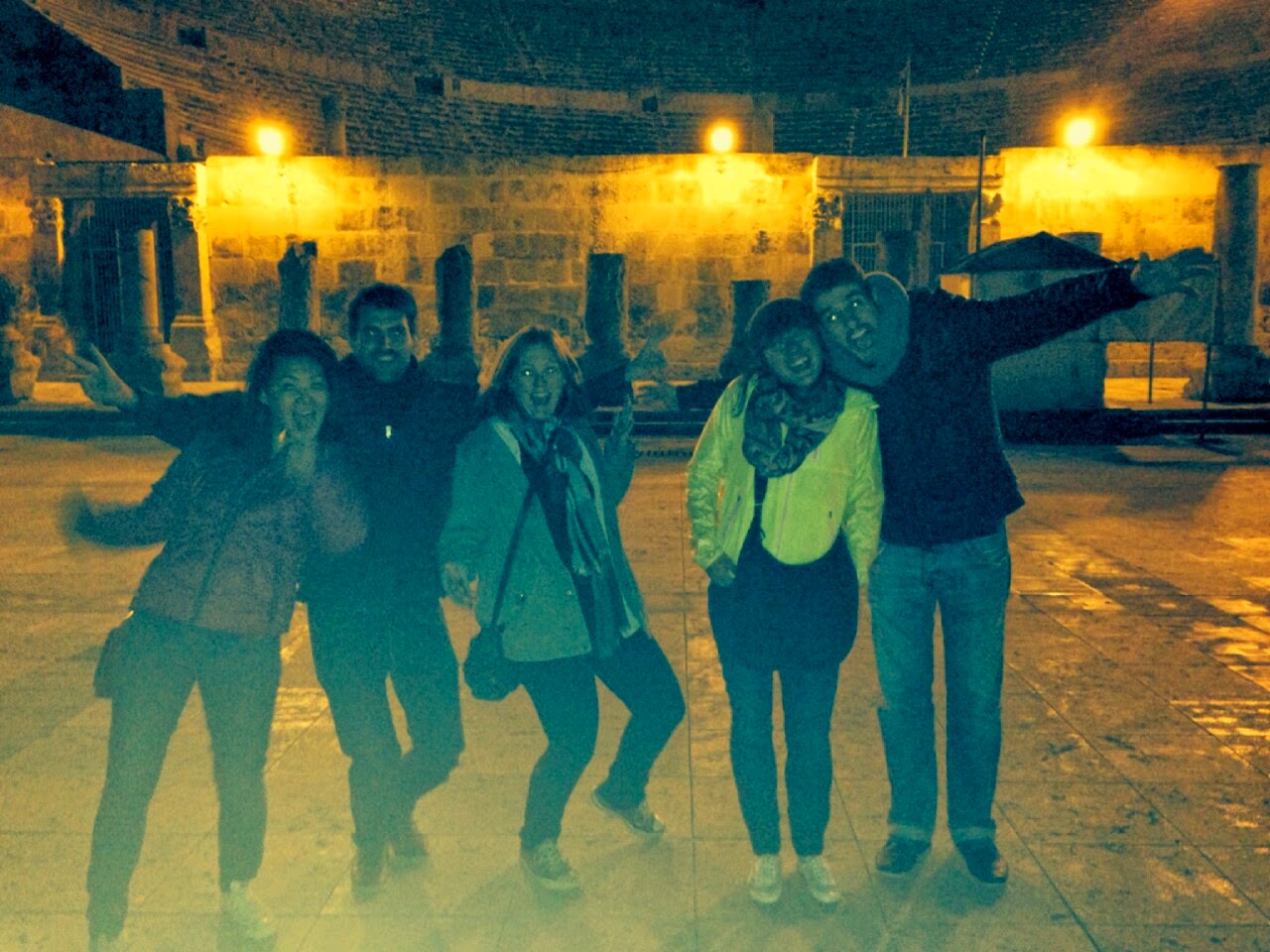Well to say the least, I definitely found a few ways and times to get back to Petra. After my initial solo visit, I travelled back with a couple of friends from Amman two different times to visit Petra, Little Petra, and the surrounding areas. These trips were relatively similar to my inaugural trip as we walked up many stairs, chatted with many Bedouin, and ate lots of good food.
After finishing my semester in Amman, I travelled with one of my good friends from Amman and her friend to Petra, Aqaba, and Wadi Rum. After parting ways in Wadi Rum, I returned to Petra on my own. I had contacted a HelpX contact, which is similar to WWOOF or Couchsurfing, but not on a farm like the first and on the basis of working unlike the second. I had arraged to stay at his house and help on the website for his tour company. I ended up staying at his place for a couple nights before one rather crazy night that involved all of us moving our bags (by then there were two other girls staying there as well) in the morning. After that I stayed with a friend of mine who I had met on two previous trips to Petra.
Unlike my previous ventures into Petra, I was staying in the government-funded Bedouin village just up the hill and a little ways away from the town of Wadi Musa - the town built for/from tourism in Petra and populated with Jordanians, but few Bedouin. The Bedouin Village is named - Um Sayhoun - and is populated with a few thousand people. Although many less are found to be permanent residents and rather live out of caves in or near Petra, especially in the warmer months of the year. The land is divided by family with each child building their own house (sizes of aparments) within that area. The families are big with many people having fifteen or more siblings. Not only do they have that many brothers and sisters, they also have brothers and sisters of brothers and sisters. For example, a guy whose father married another women and had children, that mother could have been married to another man (e.g. death, divorce) and had other children would be brother of a brother (or sister of a sister, etc); the same applies if it they shared a mother. It can get relatively complicated with families spanding for seemingly endless porpotions - especially for a only-child accustomed to small, close family.
In the Bedouin community, eventually, you realize that everyone knows each other and that news definitely travels faster than you do; especially your presence. Although it took me a couple days to finally see all the people that I had met on previous occasions, they had already heard about the "Canadian who studies in Amman and was staying with their family". The nice thing that despite not being able to keep track of everyone's name, they are quick to accept you as a member of the community. The only downside is that they are also quick to associate you with a given member of that community, which makes you someone's "girlfriend" almost instaneously; also interesting as they will ask you where this given person is whenever they see you. Coming from a very individualistic society and culture, as well as an independant nature - having someone else's existence questioned before your own wellbeing is odd, to say the least. Overall, all the Bedouin were open and welcoming, but there is definitely a difference between the older generation and the current young one (ages 25-35).
The guys from the younger generation are still proud to be Bedouin and typically keep a donkey, a cave, close family ties, and a simple life. However, they also have worked with tourists since they could walk and talk; had, have, or want a foreign girlfriend (there are a few wives); and have phones and social media profiles (less than I thought). It's tempting to say the new, younger generation is corrupted, but I think that would be a rather grand over-simplification of their lives, society, and conditions; instead it will be interesting to see how their lives play out. Currently, many of the men are not married and do not seem to be determined to settle down any time soon. According to some of them, Arab women would be too jealous even if their only interaction with Western women was for tourism purposes (talking, guiding, camping). The women seem to also be influenced by Western ideals of romance and beauty. I also feel as if the days of double digit children is over; not unlike the decrease of family sizes in Canada over the past century.
Philosophy or at least ideas about life seem to abound with the young Bedouin. That there are both bad and good people everywhere and that people of any particular nationality are not all evil or delightful. Despite all this seemingly enlightenment, the guys would get in tuffs in each other, which would usually just entail some yelling, huffing, and avoidance. Eventually things would calm down and revert to previous standards, at least for the relatively minor problems. All in all, there seems to be an interest in meeting people, thinking about life, and still not having all or any answers.
Most of my days were lackidasical, sleeping on mats either inside a cave, in a house, on a roof, or in the open. Overall it was most pleasant to sleep outdoors, despite the insistence donkey cries and dog barks. Evenings and dinner were also collective times with various dishes being cooked up. Most commonly was a mixture of cut potatos, tomatoes, onions, garlic, salt, and chicken (beef or lamb) wrapped in tin foil and placed on the embers of a fire, which cooked for maybe an hour. Eventually once it was thoroughly cooked, the package was opened up and eaten with bread and yogurt as a communal dish. Let's just say eating meals without bread didn't really happen. For lunch or breakfast, there would usually be an assortment of hummus, labneh, zatar, tuna, cucumber, tomato, onion, falafel and bread. Although the most common sources of sustenance and energy were cigarettes and tea - sweet, sweet, sage-infused tea. As with this entire region, drinking water is seldom.
The village of Um Sayhoun has expanded in its 30 year existence. Families live in clusters with new sections being built up as necessary. There are many corners stores (the norm instead of grocery stores everywhere here), a few restaurants, a mosque, a school, tour agencies, and once again donkeys outside every home. Children run relatively free within the community and are the ones sent out to fetch things. Life is quite laid back in the village with work being conducted down in "the site" (i.e. Petra) on a daily or when required basis.
During my nine day stay in Um Sayhoun, I got to experience many things: leading a camel on a leash; sitting on a camel as it drank water (you can feel its resevoir filling up!); sleeping in a cave and in the open air of Petra; climbing to the top of the Monastery/ad Deir; watching sunsets and sunrises from Petra; eating locally prepared mansaf (national dish of rice, chicken, goat milk eating communally); petting a baby donkey and goat, making friends with the dogs; cooking, eating, and socializing with Bedouin (impeccable English for the most part); and attempting my dance moves at a local wedding (in the women's section).
When it came to leaving, it seems they are not fond of people leaving, which I suppose is a good sign. They were convinced that I ought to find a job in the village - seems it would not be too difficult to find a good paying job in the tourism sector. Within the village, there are quite a number of foreign women who live and work in the village. My friends seemed quite honest in this proposal and also suggested it would be a good way to become fluent in Arabic; although I am not particularly familiar with the Bedouin dialect. For now, I have left Petra and Umm Sayhoo, but I cannot say that the idea of returning for an extended stay is not tempting.
Spending some quality time with the local children.
Hanging in one of the caves in Petra
The "little Siq" in Petra
View of Wadi Musa from Petra at night
Tons of ceramic remenants all around Petra - so many that it took me a while to realize I wasn't only walking on rock.
View of the colours in the rocks and my buddy the flea ridden pup.
View in the morning of the cave (difficult to spot) and more Nabatean ruins.
View from within the cave during the day
View of Um Sayhoun from above with parts of Petra in the background.
Morning near Petra
Inside of another cave that was painted all white on the inside.
Climbed up the Monastery at sunset!
After climbing on top of the theatre (carved from solid rock) view down to the main tourist path, the entrance to the Siq, and more caves.
View from the cave at night with a roaring fire for tea.































































